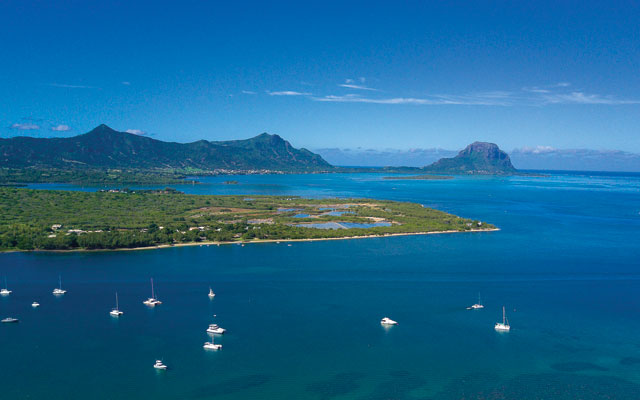Mauritius is gradually making its way to the front of the resort destination crowd. Find out why the island nation should be earmarked by incentive planners.
Mauritius may be at least a medium-haul flight from most parts of the world, but the island nation definitely has the makings of an incentive destination.
The island nation of 2,040km2 is rich in scenic beauty and boasts a dramatic coastline fringed by white-sand beaches and turquoise waters, alongside a extensive bucket-list of activities both on land and in water to provide once-in-lifetime experiences to visitors.
The country’s top tourism leaders and industry players see under-developed opportunity to grow Mauritius as an outbound destination for Asian travellers, whether for leisure or business.

Anil Kumarsingh Gayan, minister of tourism, said: “We believe that Mauritius needs a share of the global tourism market. We want to promote Mauritius as a quality destination, and peg the country as a high-end destination.”
In support of this, Arvind Bundhun, director of Mauritius Tourism Promotion Authority (MTPA), revealed that the NTO has rolled out “big visibility campaigns” in key Asian markets like India and China to shore up destination awareness of Mauritius among travel operators, OTAs and travel consumers alike.
To court more incentive visitors to its shores, the MTPA has launched a Special Incentive Scheme, which includes grants of up to MUR200,000 (US$5,648) to MICE promoters; and provides a VAT refund scheme on accommodation costs for events with at least 100 foreign delegates staying a minimum of three nights.
Bundhun also sees potential in “developing the golf market from Asia” for Mauritius, where ample greens are set against breathtaking Indian Ocean backdrops.
On the island, travel and hospitality suppliers are getting into the act of wooing more corporate incentive groups too.
Lahlali Moussa, general manager of Riu Le Morne Club Hotel & Resort and Riu Creole Club Hotel & Resort – two all-inclusive resorts located adjacent to each other on the Le Morne Peninsula in – told TTGmice that both properties have introduced Asian theme nights spotlighting Thai, Indonesian and Chinese cuisines in their F&B outlets.
Both resorts are also starting to target corporate incentive groups from Asia. Said Moussa: “We are looking at possible venues in our resorts to host events. Meanwhile, we already have standard meeting rooms with teambuilding and cooking classes.”
Over in Black River-Tamarin district, Marguery Villas Conciergery & Resort – with its villa collection varying between one and four rooms, each with their own pools and garden gazebo – is a prime example of Mauritius’ exceptional and growing pool of lodging. Offering tailor-made services through its concierge services, this property will make an ideal retreat that combine a vacation setting for C-suite meetings or teambuilding events.
As well, Mauritius’ splendid natural landscapes make an awe-inspiring backdrop for corporate incentive and teambuilding programmes, and is a key reason driving Sweety Moheeputh, a veteran with two decades of tourism industry experience, to set up her own quad bike company last year.
Pont Naturel Quad offers ATV rides, as well as teambuilding and private group tours to its namesake Pont Naturel (Natural Bridge) – an iconic volcanic rock formation that looks like a man-made bridge – in southern Mauritius. Quad rides go around Pont Naturel, as well as to nearby sights like Old Sugar Mill.
Already, Pont Naturel Quad has made inroads into the Chinese corporate incentive market, riding on the connectivity gains made with Air Mauritius’ connection to Shanghai as well as seasonal charter flights from China.
However, Moheeputh would like the airfares and connections of Air Mauritius to improve, in order to make Mauritius a more attractive destination for Asian markets.
“Affordability and visibility” are key challenges for Mauritius, shared MTPA’s Bundhun, especially when it comes to marketing Mauritius to the Asian markets, as competition is intensifying especially between other resort destinations like the Maldives and the Seychelles.
Connectivity is hence key to make Mauritius a top-of-mind destination for Asian corporate incentives and leisure market alike, a point that Air Mauritius’ CEO Somas Appavou is now seeking to address.
In Asia-Pacific, the national carrier currently flies to Delhi, Mumbai, Chennai and Bengaluru in India, Singapore, Kuala Lumpur, Shanghai, Hong Kong and Perth.
Appavou remarked that Air Mauritius was climbing in Chinese traffic three years back, but the ongoing Sino-US trade war coupled with an eroding yuan has caused the destination to lose momentum in courting the Chinese market.
On its end, Air Mauritius is now trying to seal more alliances with Chinese carriers. Said Appavou: “We are working on (securing) partnerships with Chinese carriers, and we have started discussion with China Eastern Airlines.”
Taking inspiration from Singapore as a key Asian hub, Appavou sees opportunity in positioning Mauritius as a hub between Asia and Africa, having started the Africa-Asia Air Corridor a few years ago.
This initiative has also helped to market Mauritius as part of the “Blue and Green Safari” joint campaign, which sees the island nation promoted as attractive tourism destinations alongside Kenya and South Africa, said the tourism minister.





















